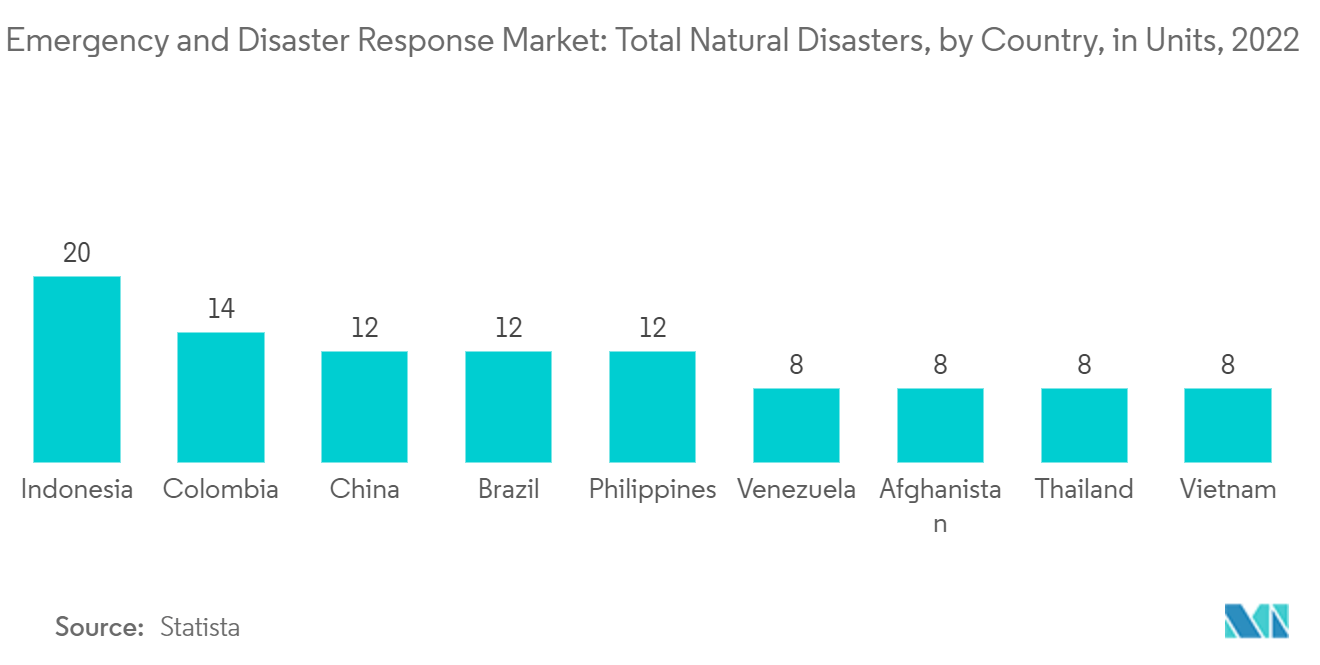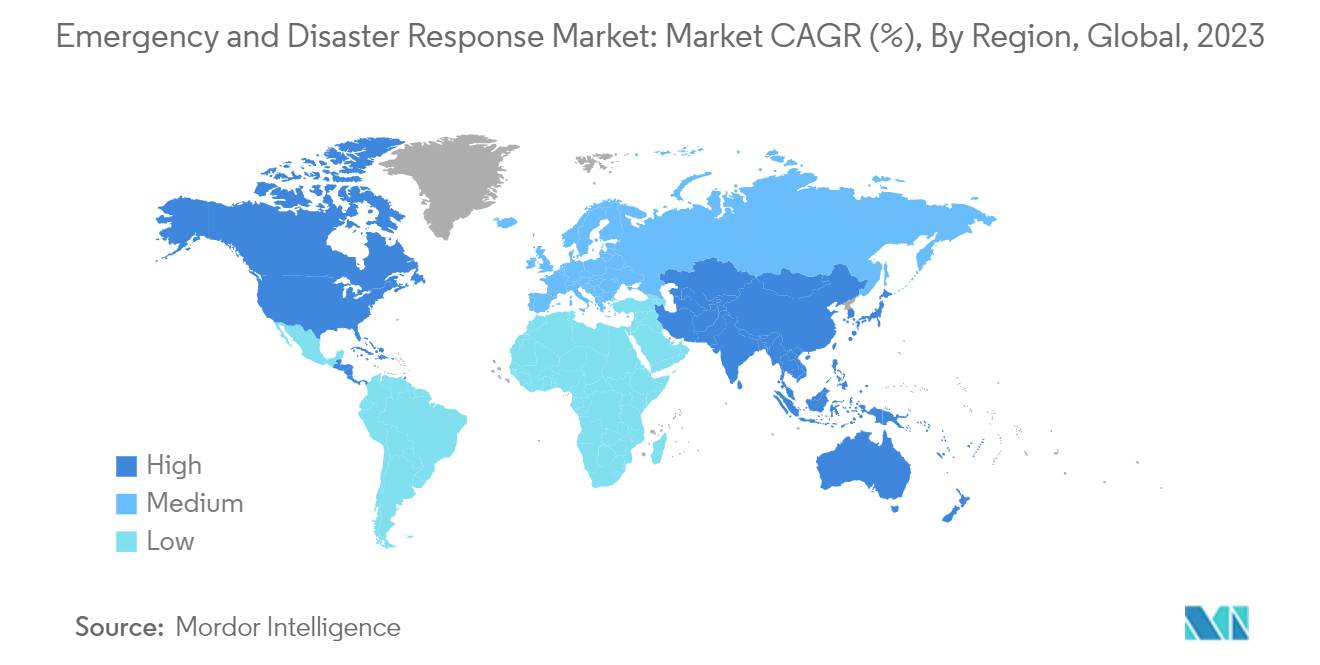Market Trends of Emergency And Disaster Response Industry
Land Segment to Register the Highest CAGR during the Forecast Period
Increasing procurement of land vehicles by various public and private organizations is acting as the main driver for the market.
Land vehicles can be locally stationed and easily and promptly deployed for emergency damage alleviation. To increase the availability of land-based emergency response vehicles, local disaster management and emergency response teams keep these vehicles at their disposal. Thus, their procurement volumes are higher than that of aerial vehicles, whose overall fleet is smaller, as they are stationed only in bigger cities with the necessary infrastructure to maintain the aircraft.
However, with the growing number of large-scale disasters, the deployment of aerial vehicles for purposes like firefighting and disaster relief logistics is increasing. For instance, in May 2022, American Medical Response was awarded a new USD 1.2 billion five-year contract to provide medical transport and support in response to national disasters and emergencies. AMR is the biggest provider of ground medical transportation in the United States and FEMA's prime EMS provider.

North America to Dominate Market Share during the Forecast Period
North America dominates the market share due to high spending from the government, in addition to the continual procurement of related equipment and vehicles by various public and private disaster rescue teams.
Severe hurricanes and floods have hit the United States in the recent past, and the country, along with Canada, has seen several forest fires in the past five years. In response to all these occurrences, the procurement of disaster response equipment and vehicles has increased in the region. These factors are expected to drive the market in the region during the forecast period.
For instance, in January 2023, ICF was awarded a three-year USD 51 million contract by the Puerto Rico Department of Housing (PRDOH) to support the commonwealth's single-family disaster recovery and mitigation programs. Under the terms of the contract, the ICF will expand its implementation support of PRDOH's Community Development Block Grant for Disaster Recovery (CDBG-DR) and Community Development Block Grant for Mitigation (CDBG-MIT) grant programs to repair and rebuild homes damaged by hurricanes Irma and Maria, as well as build resilience against future natural disasters.


